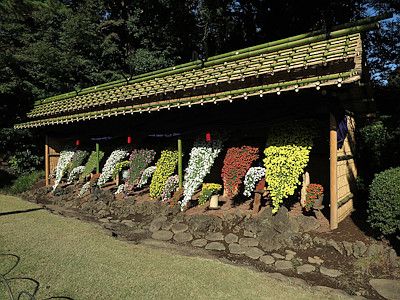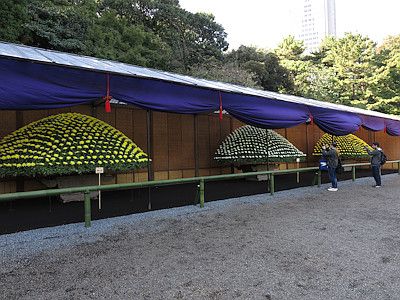Shinjuku Gyoen
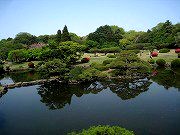 Shinjuku Gyoen National Garden (新宿御苑) is a 58.3-ha (144-acre) park located not so far from Shinjuku Station. In its grounds there are two Japanese stroll gardens (one large and one small), a French formal garden, an English landscape garden, and a greenhouse.
Shinjuku Gyoen National Garden (新宿御苑) is a 58.3-ha (144-acre) park located not so far from Shinjuku Station. In its grounds there are two Japanese stroll gardens (one large and one small), a French formal garden, an English landscape garden, and a greenhouse.
In the Edo period, eastern part of this site used to be the suburban residence of the Naito clan, the domain lord who ruled the Takato domain in present-day Nagano Prefecture. The small Japanese stroll garden at the eastern end of Shinjuku Gyoen is what is left of it.
In the Meiji era, it was obtained by the new government and was consolidated with the neighboring area (which also was once part of the residence of the Naito clan) to found an experimental agricultural institution. In 1879 it was rebranded as Shinjuku Imperial Botanical Garden, and in 1906 a French formal garden and an English landscape garden designed by a French professor was created. After this, the Garden's duck pond was converted into a Japanese stroll garden. In WWII most of its buildings were burned down, and soon after the war the garden was opened to the public as Shinjuku Gyoen National Garden.
It's a 5-minute walk from nearest Shinjuku-sanchome Station of the Toei Shinjuku Line, Tokyo Metro Marunouchi Line or Fukutoshin Line.
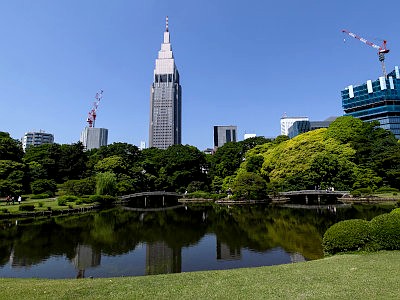
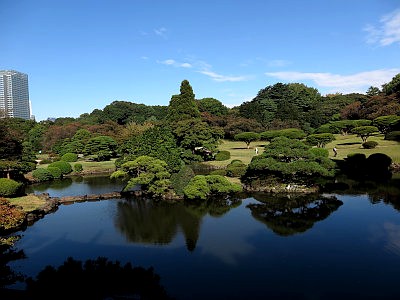
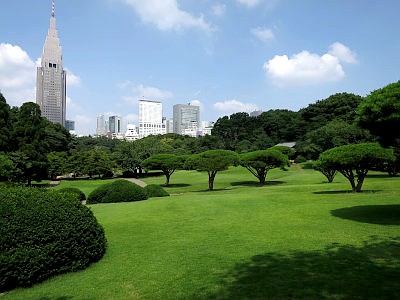
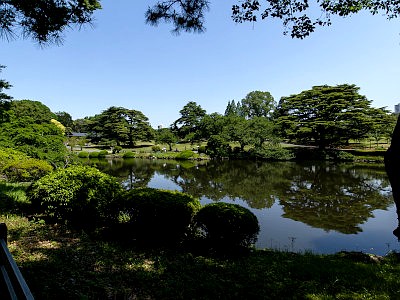
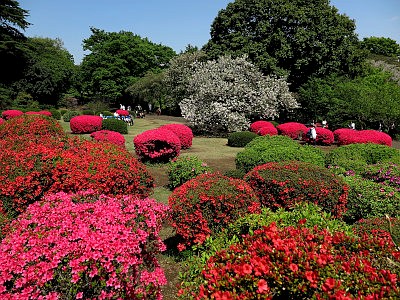
This Japanese stroll garden was constructed in the early Showa period by converting a duck pond created in the Meiji era.
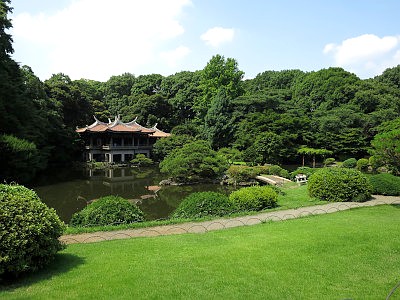
Taiwan-kaku situated in the Japanese stroll garden was given from Taiwan, which was part of Japan at the time, in 1928 to celebrate the marriage of Emperor Showa.
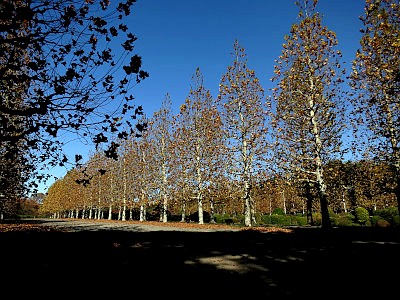
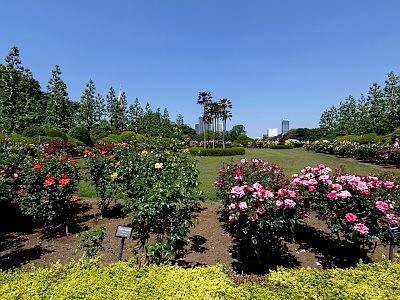
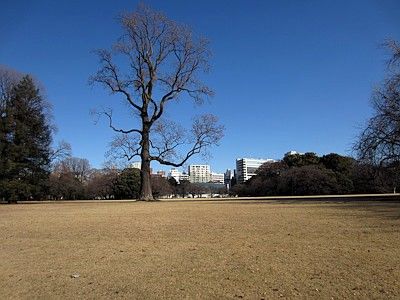
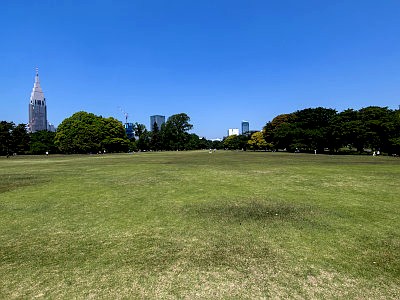
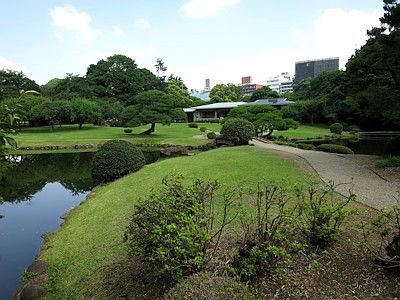
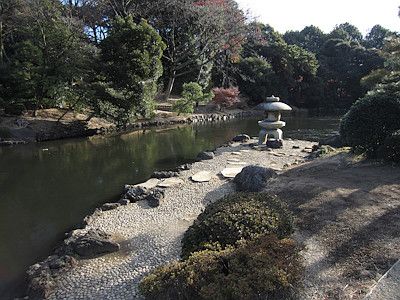
The small Japanese garden around Tamamo-ike Pond is the remains of the garden which was attached to the suburban house of Naito clan.
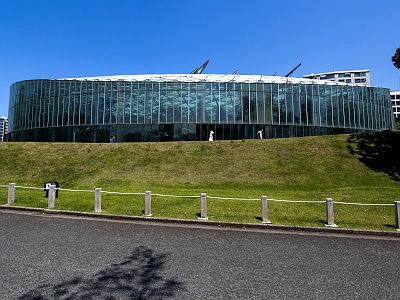
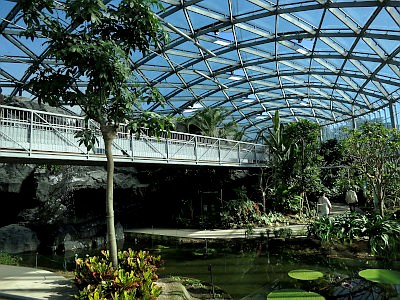
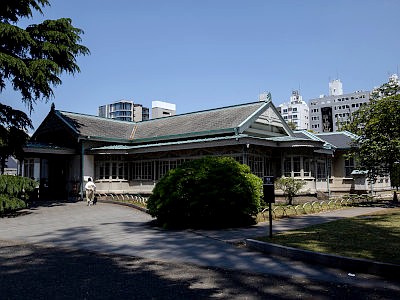
This rest house was completed in 1896 for the Imperial family.
Cherry and ChrysanthemumCherry blossom
Shinjuku Gyoen is known for its sakura (cherry) blossom. It has some 1,100 sakura trees composed of about 65 species and cultivars, blooming from mid-Feburary to late April. Unlike other major sakura sites whose main sakura cultivar somei-yoshino bloom in late March to early April, the best season for cherry flower viewing in this garden is from mid- through late- April, they say.
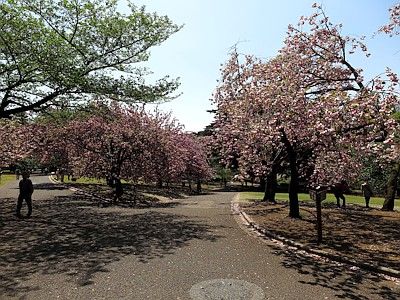
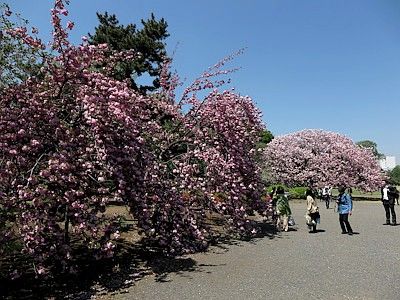
Chrysanthemum exhibition
The chrysanthemum exhibition, which takes place at the Japanese garden, is held annually from November 1 through 15. This event originated in 1878 in Akasaka Temporary Palace and was moved to Shinjuku Gyoen in 1929.
